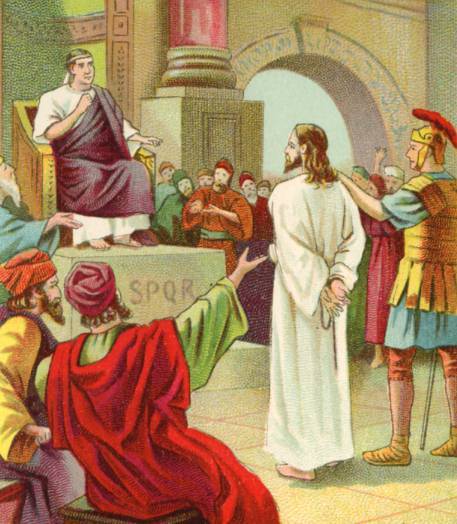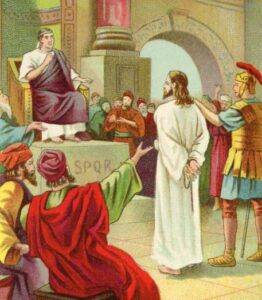
Feb 21, 2015 – I have pleasant memories of reading together as a family during the season of Lent. The five of us would read from Papers 183-187 that tell the story of Jesus’ arrest, trial, and crucifixion. Those papers are real p age turners; they are suspenseful, dramatic and inspiring. One Easter Sunday, we went to church and heard the pastor speak about an unnamed young man in the Bible who escaped from a Roman soldier in the garden of Gethsemane by slipping out of his cloak. I remember our young teenagers turning to look at us with smiles of recognition, knowing that the young man was none other than John Mark.
age turners; they are suspenseful, dramatic and inspiring. One Easter Sunday, we went to church and heard the pastor speak about an unnamed young man in the Bible who escaped from a Roman soldier in the garden of Gethsemane by slipping out of his cloak. I remember our young teenagers turning to look at us with smiles of recognition, knowing that the young man was none other than John Mark.
This memory helped me with a project that I took on some years later. For the fun of it, I created an annual cycle of readings for The Urantia Book, but I couldn’t decide when to begin the cycle. Eventually, I recalled how much I loved reading Papers 183-187 with the family during Lent. So, I scheduled those papers near to April 7th, the date of the crucifixion. When I did that, I was delighted with how the cycle blended with various seasonal observances during the year. You can see the annual cycle at Through the Year with The Urantia Book. I call it a double track annual reading cycle because the weekly sets of papers proceed simultaneously through Parts I-III and Part IV of The Urantia Book.
I think the annual cycle of readings can be a useful tool for studying with older children. You can choose a small portion of the weekly set to read together. During the months of March, April and May you’ll find readings about John Mark holding onto the basket, Jesus washing the apostles’ feet, the story of Machiventa Melchizedek, the post-resurrection appearance of Jesus at Nalda’s well, the Thought Adjusters, Seraphim, and the Pentecost story. Since Mother’s Day is observed in May you might even tackle the section titled “Quest for the Supreme”. Readings that are missed the first year, can be picked up in subsequent years.
Annual cycles are found in world religions such as Christianity’s three-year lectionary and Judaism’s annual reading of the Torah. It is a tool that provides a method for ongoing study. I hope this annual cycle will prove useful for reading The Urantia Book with older children on regular, seasonally relevant basis. Look for upcoming posts regarding summer, fall, and winter thoughts and readings.
